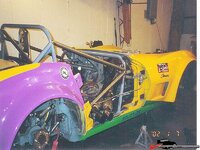pcf_mark
Well-known member
- Joined
- Aug 22, 2008
- Messages
- 218
I pose the question because I am trying ti understand this modification and can not seem to find an explanation of why using the search. Can anyone explain the purpose?
It looks like the two methods are install an 80-82 bat wing or modifying the cross member by removing the rubber bushings to raise or in more severe cases trim the frame and making your own crossmember.
I am closely studying the rear of my car to remove squat and build traction.
Any info would be very helpful.
Thanks
It looks like the two methods are install an 80-82 bat wing or modifying the cross member by removing the rubber bushings to raise or in more severe cases trim the frame and making your own crossmember.
I am closely studying the rear of my car to remove squat and build traction.
Any info would be very helpful.
Thanks

